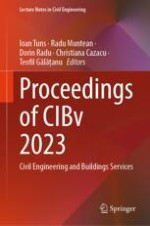This book gathers the proceedings of the 18th International Conference on Civil Engineering and Buildings Services (CIBv), held in Brașov, Romania on November 2-3, 2023. It covers highly diverse topics such as structural analysis and optimization, concrete, steel and timber structures, computer aided design of structures, railways, roads and bridges, geotechnics and foundations, experimental methods in the investigation of structures, new and improved building materials, risk assessment of natural hazards, advanced energy design for HVAC installations, energy performance of buildings, and efficient buildings. Written by leading researchers and engineers, and selected by means of a rigorous international peer-review process, the contributions highlight numerous exciting ideas that will spur novel research directions and foster multidisciplinary collaborations.
